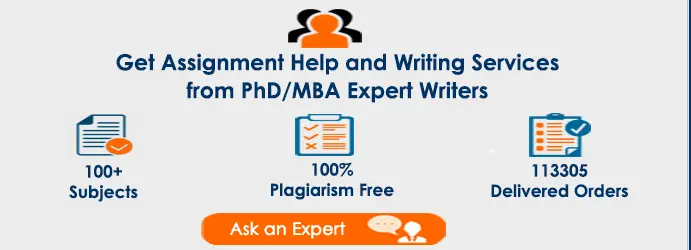Coursework for MBA Corporate Finance Assessment answer
Do you need help with Corporate Finance Coursework with assessment Question and Answer? Get answers of Corporate Finance at Casestudyhelp.net. We provide the best case study homework at the most affordable price with 100% original content. We are available 24*7 on the internet browser.
Fixed Income Valuation
1. On December 20, 1994 the Nippon Telegraph & Telephone Corporation (NTT) issued ¥1 billion of 10-year debentures due December 20, 2004. The debentures carried a 4 3/4% coupon. They were priced at par, that is, they cost the investor ¥100 per ¥100 of face value. The entire amount of borrowed principal would be repaid at maturity. Interest would be paid annually upon the anniversary date of the issuance (i.e., on December 20th of each year). The debentures carried a AAA credit rating.
- What was the yield to maturity of NTT’s debentures at the time of issuance? What would it have been if the bonds were priced at 99 instead of 100 (i.e., at 99% of face value)? at 101 instead of 100?
- By 1996 yields on AAA yen debt maturing in 8 years had dropped to 3.00%. Given this yield to maturity, at what price should the NTT debentures have been selling?
2. Alumm is the portfolio manager for a large insurance company. She is considering investing $1 million to purchase some bonds of Patriot Enterprises, Inc.
All of Patriot’s bonds have market prices that imply a yield to maturity of 8% “bond equivalent yield” (that is 4% every 6-month period).1 Each Patriot bond is described here, based on a $1,000 face value (par value), which is the promised payment at maturity.
- Bond A matures in five years and pays a 9% coupon yield ($45 every 6 months on a $1,000 face value bond).
- Bond B matures in ten years, pays an 8% coupon yield ($40 seminannual payments), and is being offered at par.
- Bond C is a zero-coupon bond that pays no explicit interest, but will pay the face amount of $1,000 per bond at maturity in ten years.
A. At what price should each bond currently sell?
As an alternative, Ms. Alumm has been invited to invest $1 million in a 10-year Eurobond of a second firm, Nationaliste, S.A.2 Nationaliste bonds are similar in risk to “Bond B” above: they promise an 8% coupon yield for 10 years, but coupons are paid annually, not semiannually. The Nationaliste bonds are priced at a 1% discount from par, or $990 per $1,000 face value.
B. What yield to maturity is implied by the Nationaliste Eurobond? Compare this yield to the 8% “bond-equivalent yield” of the Patriot semiannual coupon bond (Bond B) above. In which bond should Ms. Alumm invest?
Must Read: What are the 10 Mistakes to Avoid in Case Study Writing?
3. A prospective homeowner wants to determine how much she can borrow in the form of a fixed-rate 20-year Mortgages of that maturity carry a fixed interest rate of 9.00%. She estimates that she can afford annual, pre-tax payments (interest plus principal) on her mortgage of $25,000 (for simplicity, assume that mortgage payments are made once a year at the end of the year).
A. How large a mortgage can she afford, assuming she makes steady payments of $25,000 per year for 20 years? How much total interest will be paid over the 20-year life of the mortgage? How much interest will be paid during the first year of the mortgage? How much principal will be repaid in the first year? How much of the final $25,000 payment at the end of 20 years will be interest and how much will be principal?
B. Suppose the prospective home owner expects her income to grow such that she could afford
$25,000 per year of total debt service in the first five years of a 20-year mortgage, $30,000 per year in the second five years, $35,000 in the third five years, and $40,000 in the last five years. How large a mortgage at 9.00% could she afford under these circumstances?
4. To help ease a continuing need for financing, the Consolidated Chemical Company is considering borrowing from insurance companies through a so-called “private placement” of bonds in addition to issuing bonds in public debt The company must choose between transactions suggested by two different insurance companies. In both transactions, Consolidated Chemical would receive $10,000,000 up front in exchange for issuing a bond promising a single (larger) maturity payment from Consolidated Chemical in 15 years at a promised interest rate. The two options open to Consolidated Chemical are as follows:
- A 15-year bond to Pru-Johntower Life Insurance Company, promising an annual rate of interest of 10%;
- A 15-year bond to Tom Paine Mutual Life Insurance Company, promising a rate of interest of 9.72% per year, compounded monthly.
A. What is the effective annual yield to maturity on each of the bonds?
B. What is the future required payment that Consolidated Chemical will make 15 years later on each bond?
The Treasurer of Consolidated Chemical also explored with each insurance company the possibility of selling an identical dollar amount of 15-year bonds that would make regular semi-annual coupon payments each year and $10 million principal repayment at maturity rather than a single lump-sum payment. It was discovered in each case that the insurance company would require an effective annual yield on ordinary coupon bonds of equivalent default risk that was 50 basis points (i.e., 0.50%) higher than the effective annual yields on the bonds with no coupons.
c. What might explain why the insurance companies would require a slightly higher effective annual yield on the coupon bonds compared to the bonds with no coupons?
Check Out: The Secrets of Crafting an Impressive MBA Case Study
5. In September of 1995, McDonalds Corporation issued $150 million of Senior Notes due in 2005. The notes were issued at par and bore interest of 6 5/8%, paid semi-annually (i.e., interest of $33.125 per $1000, bond would be paid twice a year). The debt was rated AA by Moodys. Interest payments on this debt were deductible for corporate tax purposes (you may assume that McDonalds’s marginal corporate tax rate was 35%), though principal repayments were not. All principal would be repaid in September 2005.
A. From McDonalds’s perspective, what is the effective after-tax cost of this debt (expressed as an annual percentage)?
B. How many dollars of taxes will McDonalds save each year through the deduction of the interest expense on these notes from taxable income (you may assume that McDonalds will have sufficient taxable income in future years to cover the interest expense on this debt)? What is the present value of these future tax savings?
Also Read: The 5 Key Elements of a Successful Case Study
6. In late 1993, the Weyerhauser Corporation was considering the use of a so-called “Industrial Development Bond” to help finance the construction of a facility in the state of North Carolina. Industrial Revenue Bonds (IRBs) and Pollution and Environmental Control Revenue Bonds (PCBs) were financial instruments issued by a state or local government authority — in this case, Martin County, North Carolina. The proceeds from these securities would be used to finance the development of facilities or the purchase of equipment that would be managed by a for-profit company, but that would serve a particular local public interest such as providing employment in a depressed region or reducing Because the bonds were technically issues of state or municipal authorities, interest income on the bonds was exempt from taxation. The issuing government authority was merely a conduit, however. The interest and principal on the debt was effectively repaid by the sponsoring corporations (e.g., Weyerhauser), which was designated in the bond’s indenture as the guarantor of the bond and the ultimate source of funds from which the bond’s interest and principal would be paid. Although the interest income received by IRB investors was exempt from taxation, the interest expense effectively paid on the IRBs by the corporate entity servicing and guaranteeing the bonds was deductible for tax purposes.
In late 1993, $50 million of IRBs that would be guaranteed and serviced by the Weyerhauser Corporation could have been issued at par with an annual bond-equivalent yield of 5.65% (i.e., interest of $28.25 per $1,000 bond would be paid twice a year). They would mature 30 years later in the year 2023. If Weyerhauser were instead to issue bonds of equivalent maturity and risk as the IRBs but do so as a direct obligation of its own, the interest paid on such debt would not be exempt from taxation to investors. To be sold at par, such fully taxable bonds would have to provide a higher coupon yield in the vicinity of 7.25% (paid semiannually).
A. Why would Weyerhauser’s IRBs have a lower effective annual yield than that of its direct obligations of equivalent maturity and risk?
B. What is the present value of the savings Weyerhauser would realize if it arranged the IRB financing described above instead of a conventional corporate bond with a yield of 7.25%? For simplicity assume that only interest would be paid during the life of the bonds and that all principal would be paid at maturity. Also assume that Weyerhauser’s marginal corporate tax rate was 35%.




